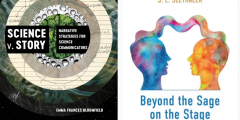Digging Deep into Stories in Science Communication
May 17, 2024
This book review was first published in SciComm Book reviews for the Public Understanding of Science Blog. It is reposted here with permission. The official print version is also now available here. I reviewed two books: Bloomfield, E. F. (2024). Science v. Story: Narrative Strategies for Science Communicators. University of California Press. Seethaler, S. L. (2024). Beyond …
Responsible AI to the max: Meet Goody-2
February 10, 2024
This is not a real blog post. I just needed to mark the advent of a thought-provoking and funny, yes funny, AI, namely Goody-2 (and my brain always adds ‘shoes’….). Finding Goody-2 A couple of days ago, I saw this tweet by Melanie Mitchell, a complexity scientist and expert on AI, which made me curious. …
Science and trust – the sequel
November 10, 2023
In 2018 a new ‘International Science Council’ (ICS) was established and I wrote a blog post in which I critically dissected the announcement of this launch. I tried to show that this announcement seemed to perpetuate a series of misconceptions relating to science and trust. At the end of October 2023, the ISC Centre for …
Synthetic embryos: Science, communication, clarification
June 23, 2023
Earlier in the month (June, 2023) I saw some headlines saying things like “Scientists say first synthetic human ’embryo’ created” or “First reported synthetic human embryo sparks ethical concerns, creates questions” or “Synthetic human embryos created for first time using no eggs or sperm”. These headlines appeared soon after an exclusive article on the matter …
Science, communication, politics and power
September 2, 2022
I haven’t written about science communication for a while. It’s a thorny subject. But a few days ago, Ken Rice posted some musings on science communication which made me think. He argues that when ‘we’ (I suppose he means individuals or nations or indeed policy makers) don’t “deal with various societal problems as well as …










